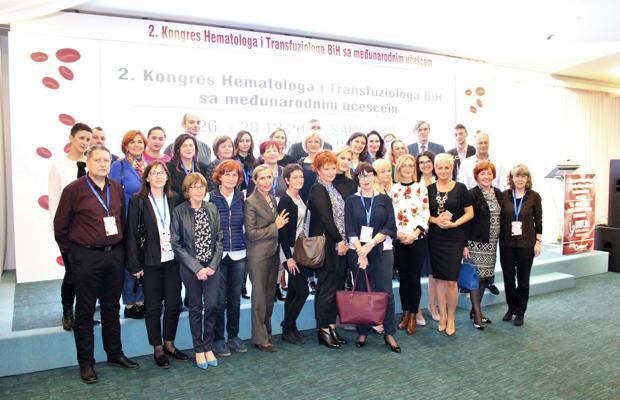DASISION 4-Year Follow-up Continues to Show Superior Efficacy of Dasatinib vs Imatinib as Frontline Therapy for CML
• 4-year safety and efficacy update of DASISION (CA180-056): randomized, open-label phase III trial[1]
Summary of Key Conclusions
• At 4-year follow-up, dasatinib continues to show superior efficacy vs imatinib as frontline treatment of chronic-phase chronic myeloid leukemia (CML)
o Deeper molecular responses
o More European LeukemiaNet (ELN)–defined optimal responses
o Fewer transformations to accelerated phase/blast phase (AP/BP)
• No new safety signals identified with dasatinib
• Exploratory landmark analyses suggest reducing BCR-ABL transcript to ≤ 10% on the International Scale (IS) at 3 months associated with better 4-year PFS and OS regardless of treatment
• Updated results continue to support dasatinib as an active, well-tolerated frontline therapy in CML
Background
• Early response to treatment important for long-term clinical benefit
• DASISION: superior efficacy of dasatinib 100 mg/day compared with imatinib 400 mg/day in newly diagnosed chronic-phase CML[2]
o Met primary endpoint: higher rates of confirmed complete cytogenetic response vs imatinib at 12 months
o Deeper and more rapid molecular response vs imatinib
• Current report is 4-year update of DASISION safety and efficacy with analysis of predictive potential of early molecular responses
Schematic of Study Design

Eligibility
• Philadelphia chromosome–positive, chronic-phase CML
o Biopsy confirmed
o Diagnosed within 3 months of study entry
• Previously untreated disease (hydroxyurea or anagrelide permitted)
• ECOG performance status 0-2
• Adequate organ function
Baseline Characteristics

• Patient disposition and discontinuations to date
o 4-year update: 11 patients in each arm discontinued between Years 3 and 4

Description of Current Analysis
• Analysis update, minimum follow-up: 4 years
• Calculated cumulative molecular response rates by competing risk analysis in intent-to-treat population
• Progression and survival data collected at least annually after discontinuation for follow-up
o Progression defined as doubling of white blood cell counts, loss of response, Philadelphia chromosome–positive metaphases > 35%, transformation, or death from any cause
• Mutational analysis conducted at discontinuation or at time of clinically relevant events for extended analyses
• Retrospective and exploratory landmark analyses
• Reported P values have not been adjusted for multiple comparisons
Main Findings
• Dasatinib treatment associated with 1.6-fold higher likelihood of reaching major molecular response compared with imatinib (HR: 1.55; P < . 0001)
o Higher cumulative rate of major molecular response over 4 years (76%) vs imatinib (63%)
At every time point assessed
In every Hasford risk stratification group
o Patients receiving dasatinib also have higher 4-year cumulative rate of reaching MR4 and MR4.5 response levels, which are associated with improved long-term outcomes
• Fewer transformations to AP/BP CML in dasatinib arm

• 3-year exploratory analysis detected distinct patterns of BCR-ABL mutations in each arm
o Dasatinib: 18 mutations (4 unique) in 17 patients; 65% T315I
o Imatinib: 24 mutations (12 unique) in 18 patients
o Only 1 mutation (G250E) seen in both treatment groups
• No difference in estimated 4-year OS or PFS between treatment arms

• Dasatinib-treated patients achieved more ELN-defined optimal molecular responses and fewer failures compared with imatinib-treated patients at 3, 6, and 12 months
o Failure to achieve BCR-ABL ≤ 10%IS at 3 months associated with shorter 4-year PFS and OS

• Safety profile unchanged from previous analyses
o Pleural effusion, thrombocytopenia more common in dasatinib-treated patients; myalgia, edema more common in imatinib-treated patients
References
1. Cortes JE, Hochhaus A, Kim DW, et al. Four-year (yr) follow-up of patients (pts) with newly diagnosed chronic myeloid leukemia in chronic phase (CML-CP) receiving dasatinib or imatinib: efficacy based on early response. Program and abstracts of the 55th American Society of Hematology Annual Meeting and Exposition; December 7-10, 2013; New Orleans, Louisiana. Abstract 653.
2. Jabbour E, Kantarjian HM, Saglio G, et al. Early response with dasatinib or imatinib in chronic myeloid leukemia: 3-year follow-up from a randomized phase 3 trial (DASISION). Blood. 2013;Epub ahead of print].





